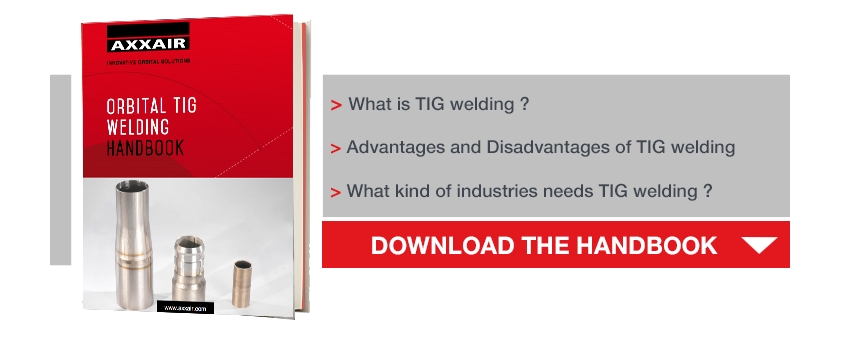Welds that are intended for application in clean rooms have to be no less than perfect. Numerous welders are confronted with faulty welds and are forced to correct them.
What is to be avoided?
# Oxygen: the biggest enemy
A discoloration of the weld is always a bad sign. In fact, a weld should never come into contact with oxygen. The defective weld joint will be a source of corrosion and porosity and cannot be used in clean rooms or high-purity areas. Therefore, before starting the arc, the tubes must be purged using a gas with the correct level of purity (99.99%).
- Thorough purging is crucial
In every welding procedure specification (WPS), the welder indicates the time required for purging the pipe. Purging is done by using argon or similar inert gases to eliminate the oxygen inside the tube. When working with a closed head, the welding joint can additionally be purged from the outside of the tube with shielding gas.
Mixing the purge gas with hydrogen not only reduces the HAZ (heat-affected zone), but also the amount of energy required by 25%. This is because hydrogen has the property of bundling the electron beam emanating from the tungsten and thus reduces the width of the weld bead. This results in a reduction of the fused surface.
- Avoid excessive purging
A welder may be tempted to use an excessive amount of gas to avoid the dreaded oxidation. But an excess of gas will cause new problems at the weld joint, which makes it nonviable for a clean room environment. In fact, excessive gas flow will create turbulences in the pipe, which will significantly alter the course of the weld since it would affect the stability of the welding arc.
A piece of advice: refer to your gas supplier's instructions and follow his recommendations!
# Insufficient weld penetration
A defect like this is obviously unacceptable in a clean room. This problem can be caused by an incorrect program set up on the power supply involving several factors such as the welding speed or the length of the welding arc.
# Aligning the tubes
Clean rooms mainly utilize tubes with small diameters. This is all the more reason to check the correct alignment (fit up) of the tubes as to avoid any overlap. Tube preparation is key. Tubes are often cut with band or guillotine saws or by grinding. These cutting methods are to be avoided in clean room applications since they result in large burrs on the tube ends as well as metal shavings. Only orbital cutting with a saw blade offers sufficient quality to meet most requirements. In order to obtain a clean and burr-free cut and to further improve the surface condition of the tube, squaring is recommended.
Keep in mind that the defects mentioned above need to be amended in order to have your WPS validated.
The advantage of automated TIG welding: superior weld quality. Once the WPS is validated, you get the same level of quality for each weld, tube after tube. Also, weld defects are a thing of the past…



